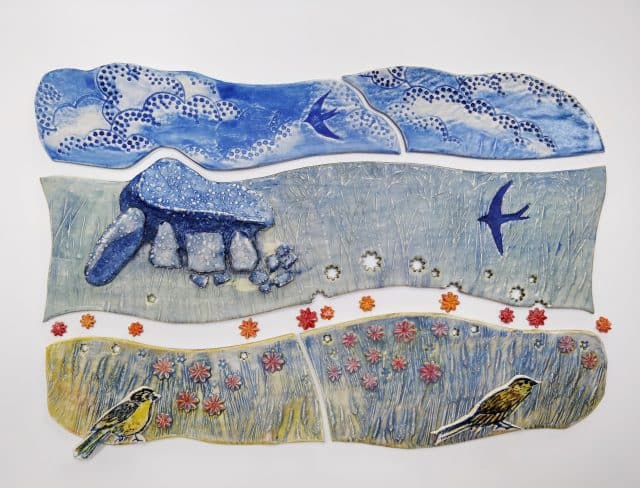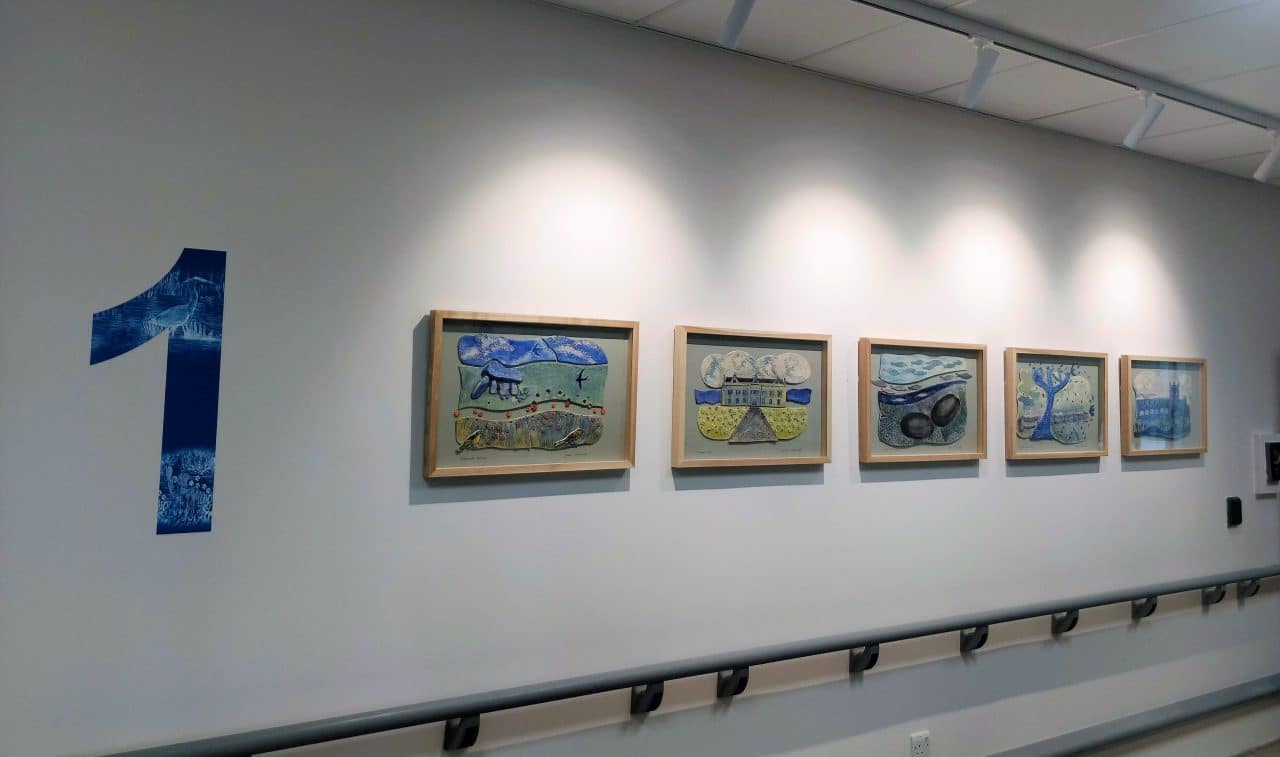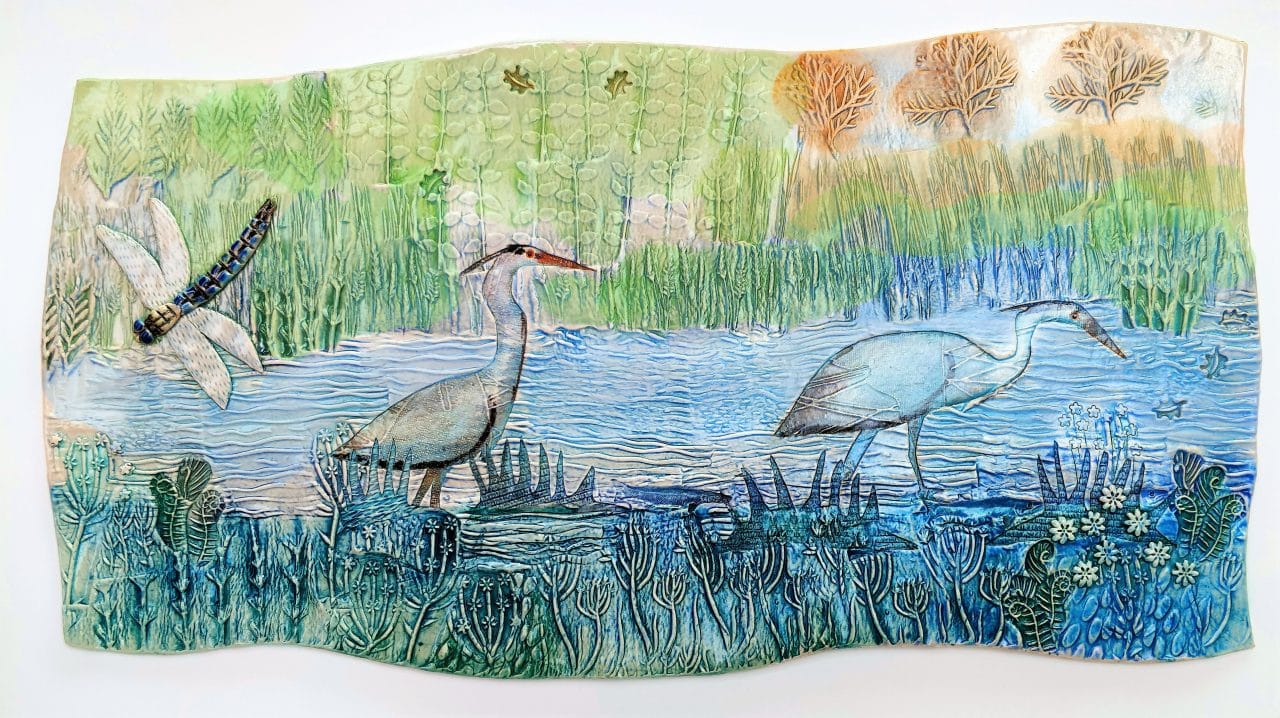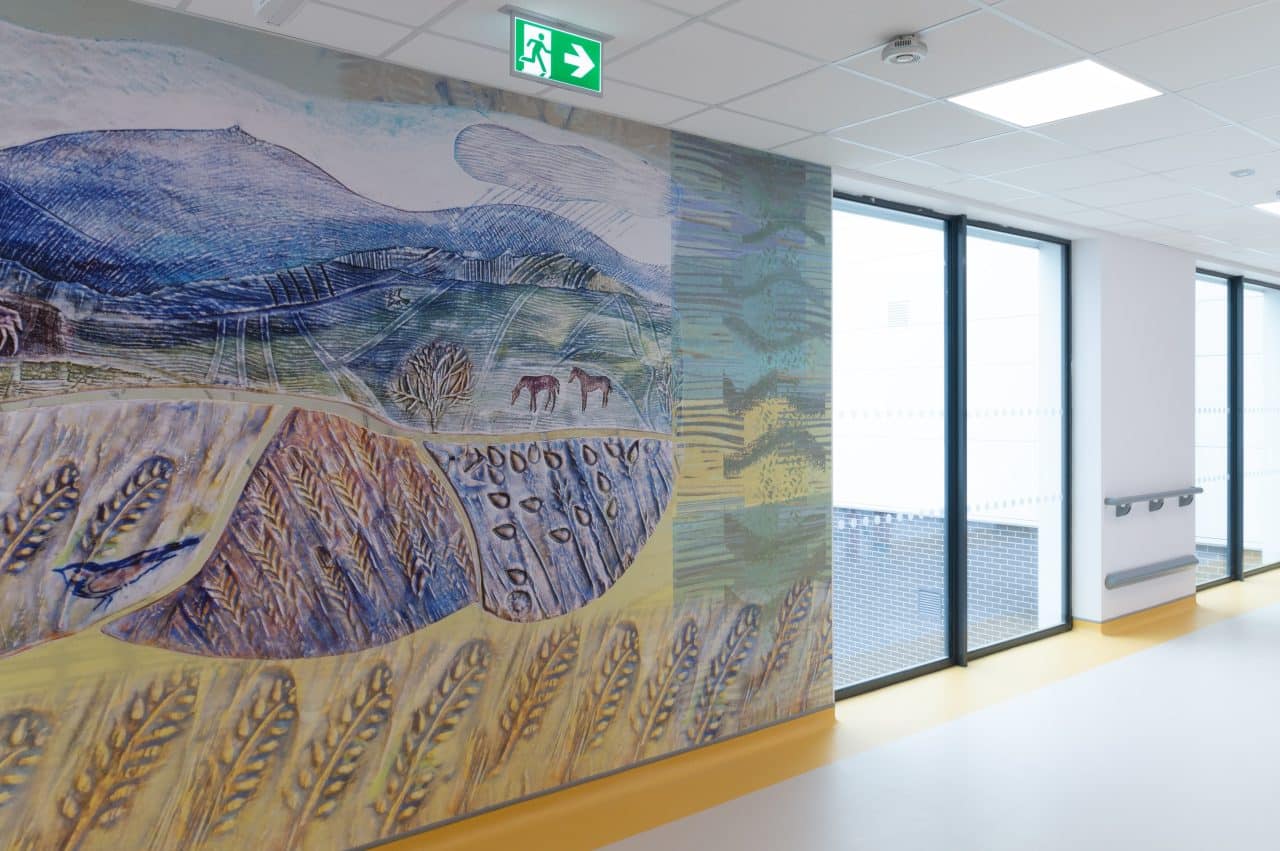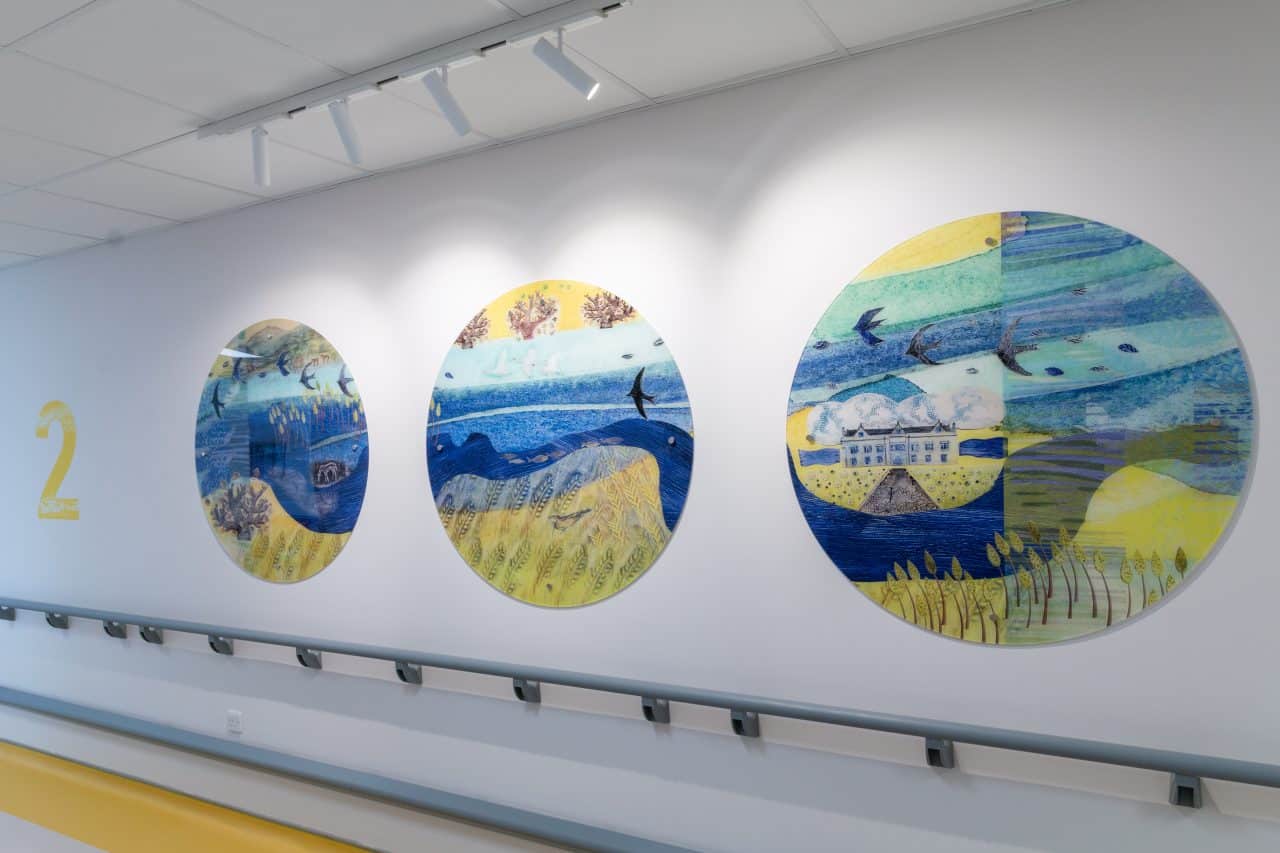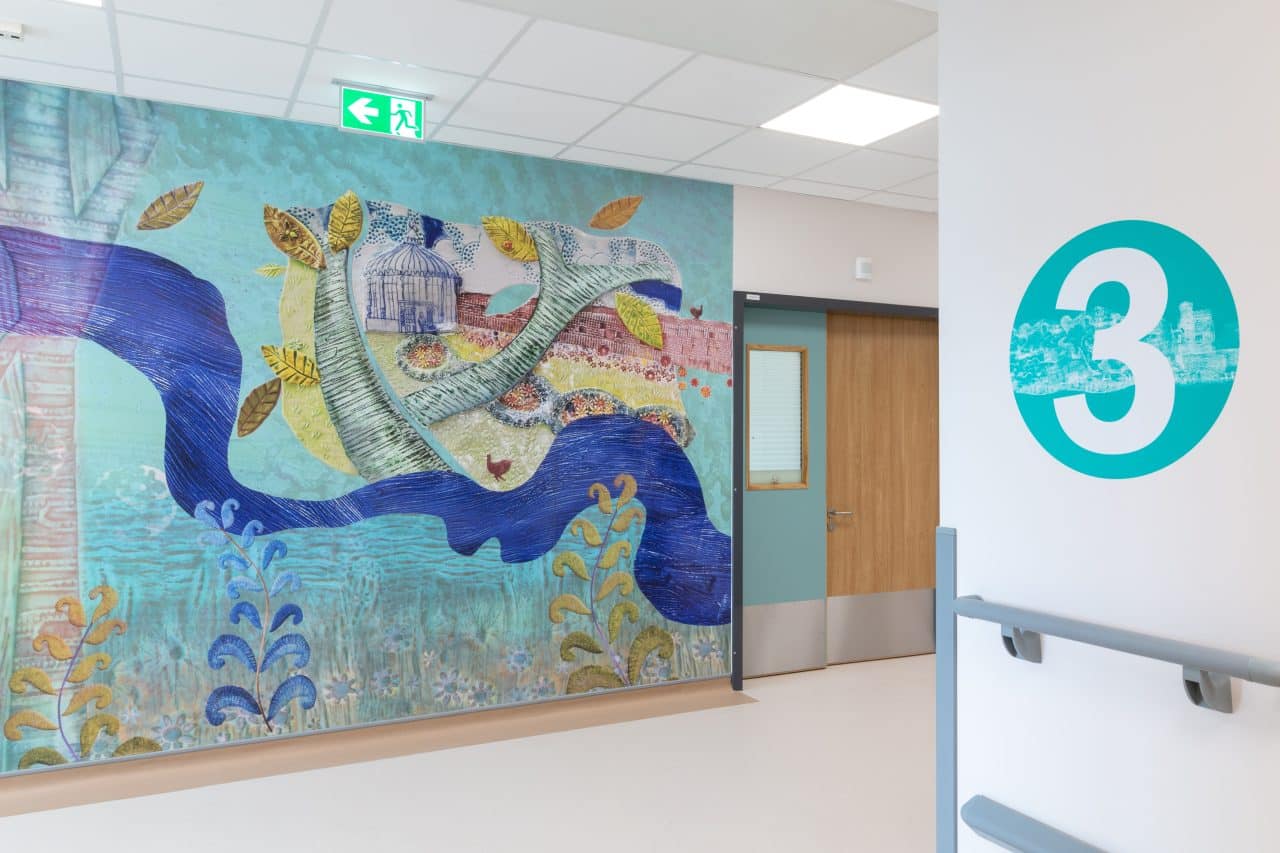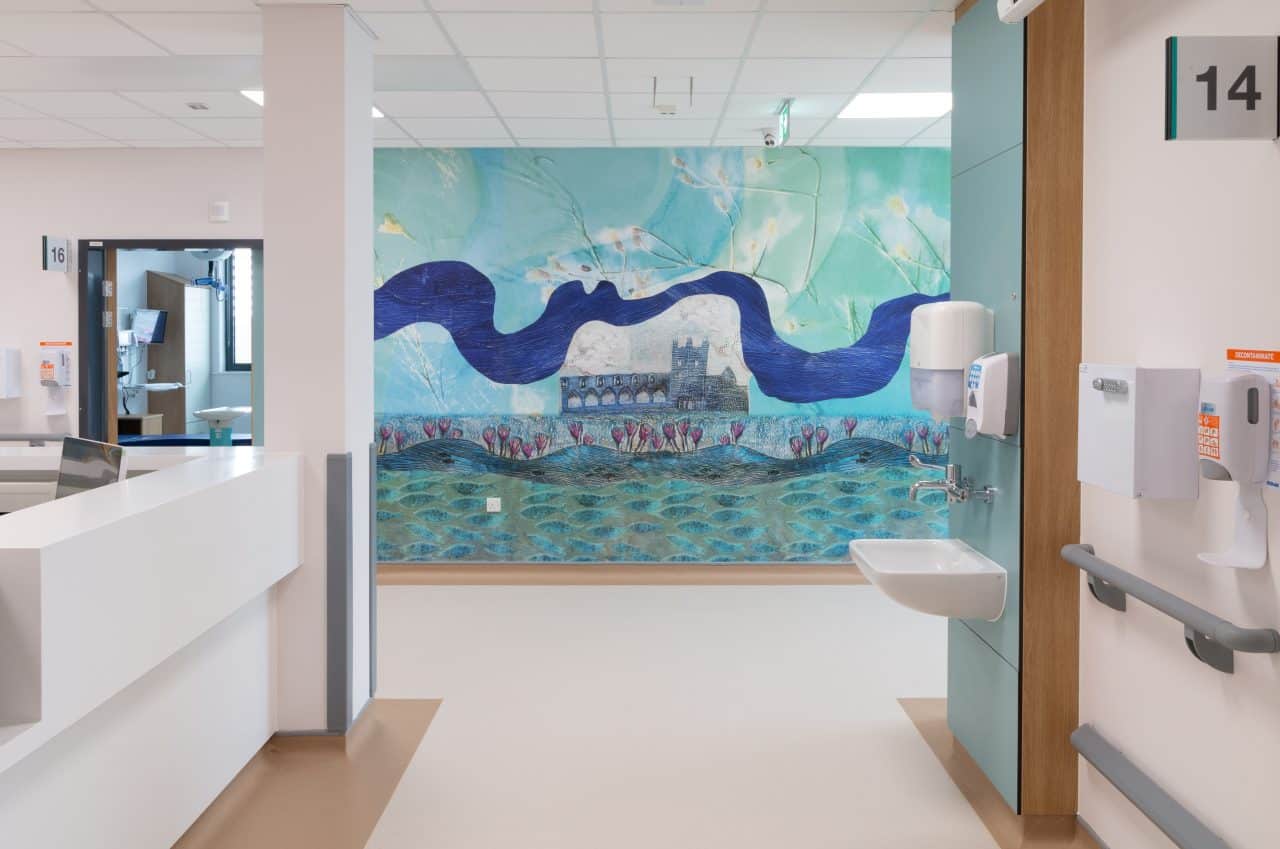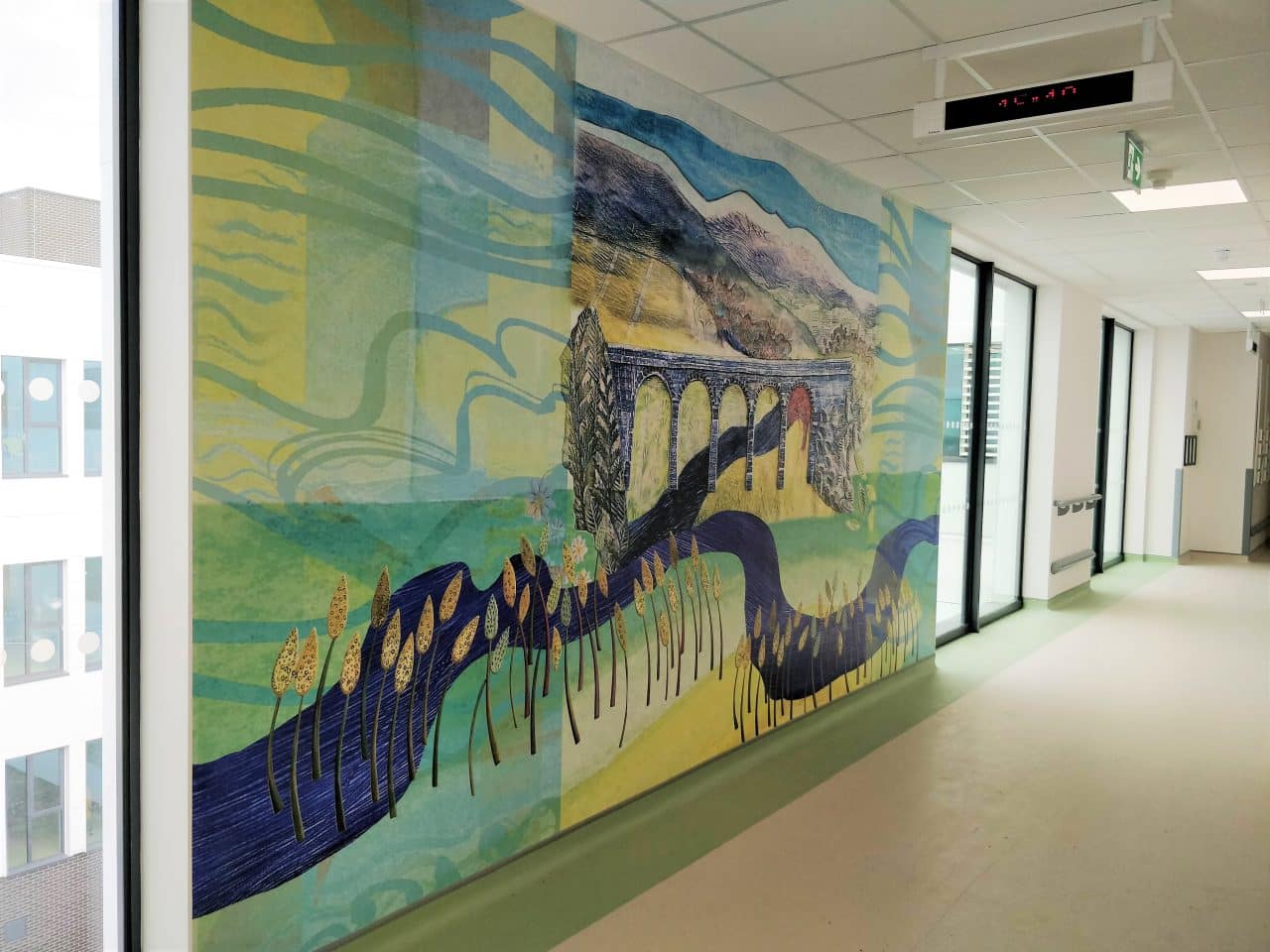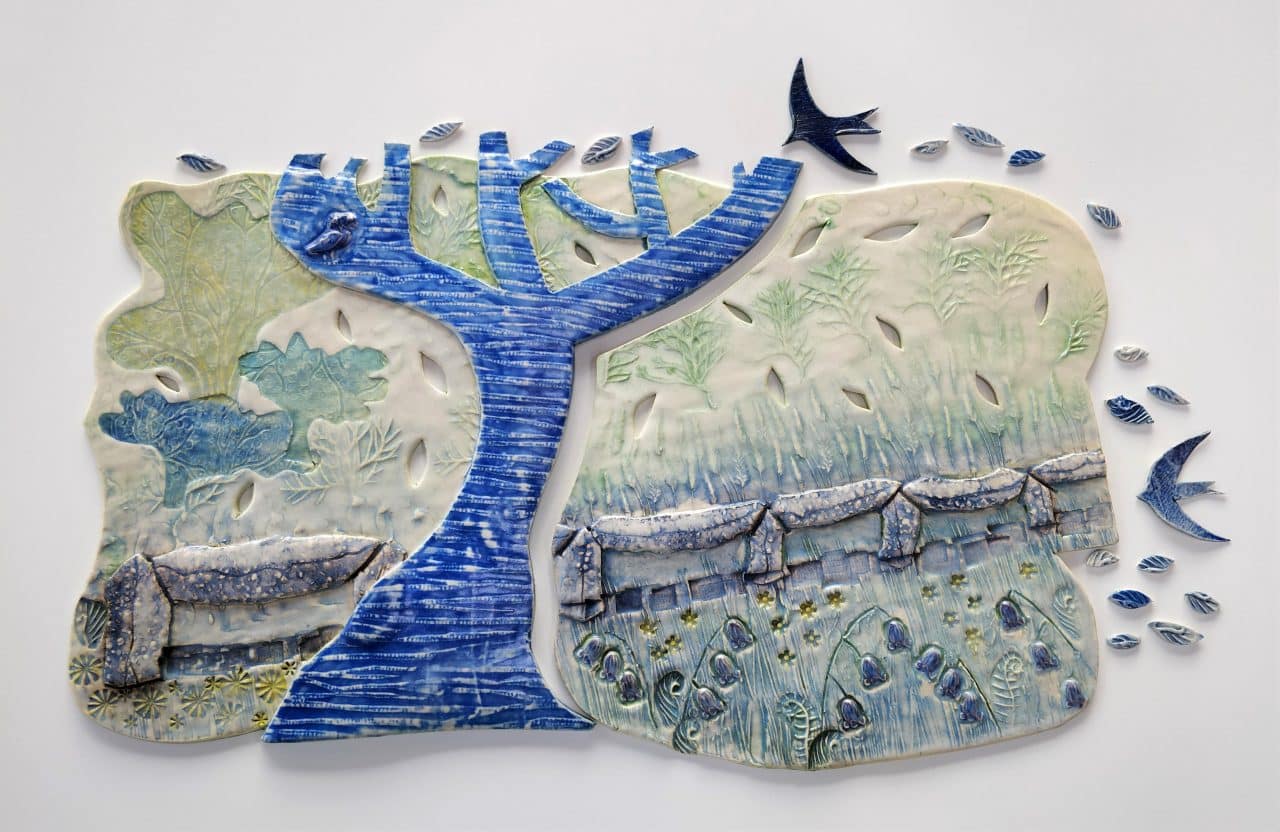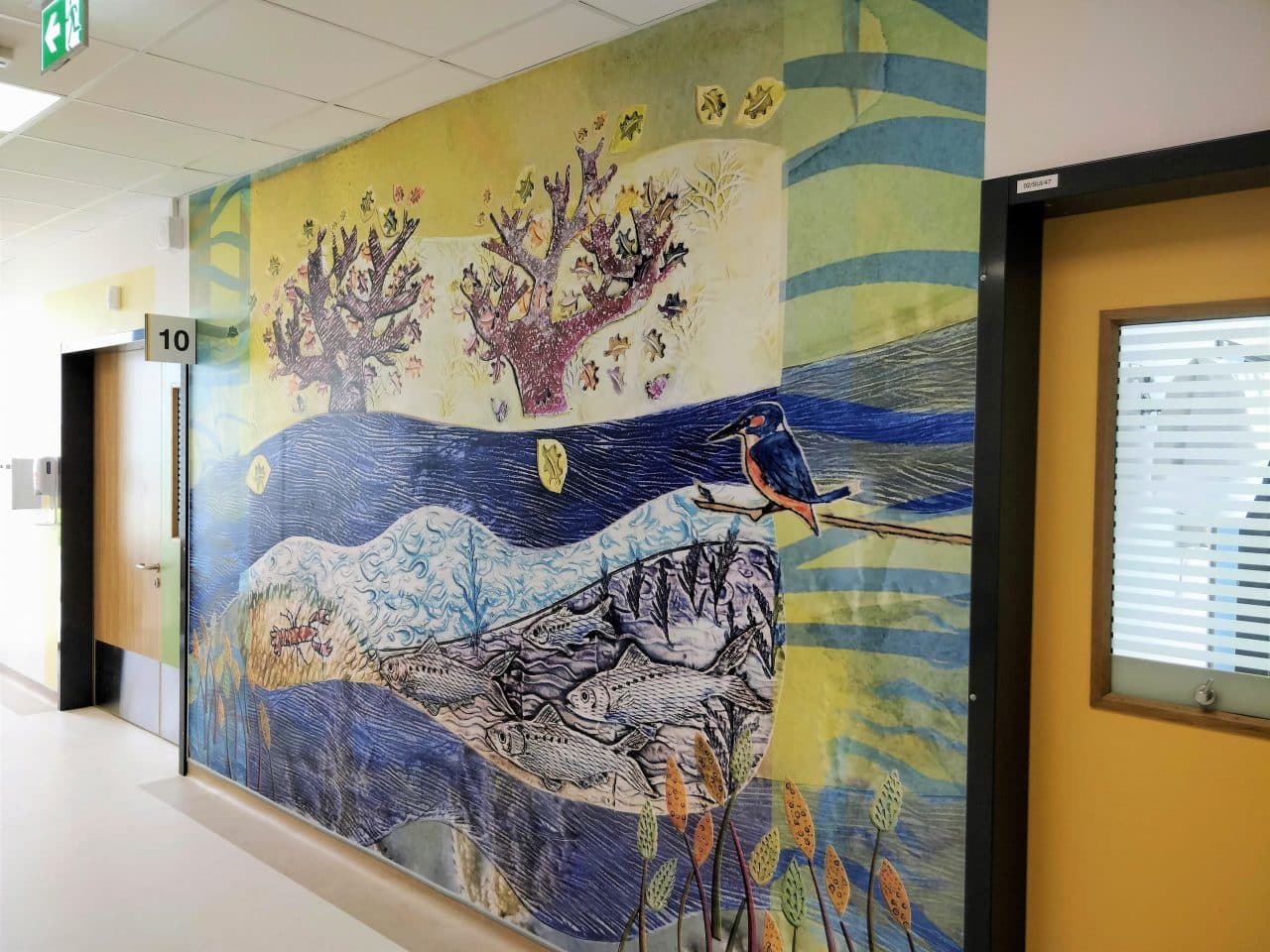
Ormond Wing – St Luke’s General Hospital
Date: 2022
Dimensions: Various
Materials: Artworks in framed ceramics, printed Perspex and printed wallcoverings from Vescom.
Techniques: Printed and framed ceramics in porcelain. Printed wallcoverings and perspex taken from the ceramics and altered in Photoshop.
Commissioned by: HSE through the Percent for Art Scheme
Location: New Ormond Wing of St Luke’s General Hospital in Kilkenny
Architects: Wejchert Architects
Description: ‘The Three Sisters’ is a group of connected artworks for the new Ormond Wing of St Luke’s General Hospital in Kilkenny. Made in ceramics, printed Perspex and Vescom wallcovering, and commissioned by the HSE through the Percent for Art Scheme, it was installed in various locations on all four floors of the 77-bed wing.
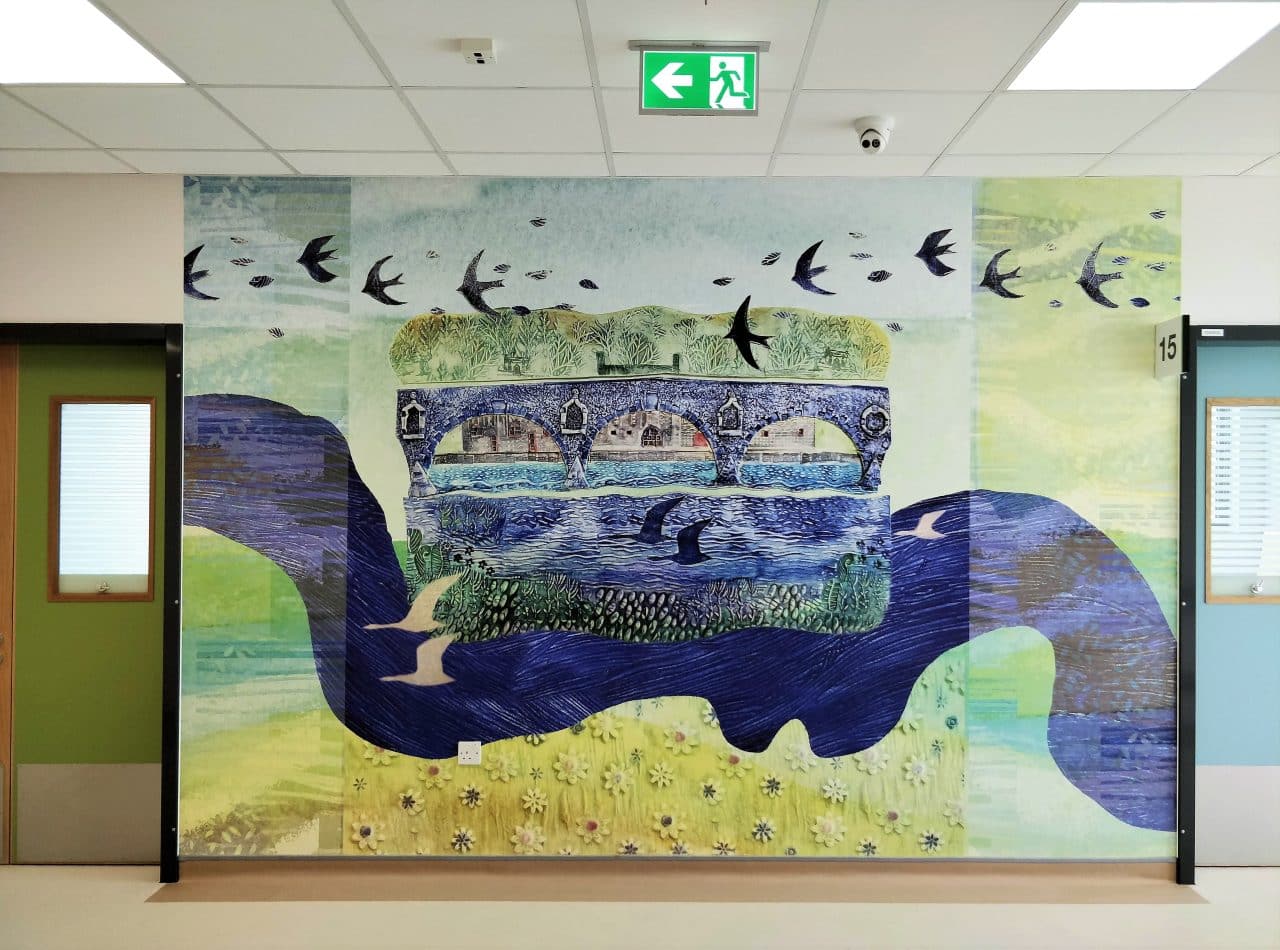
The artworks were commissioned in 2021 and provide a link to the surrounding area by creating a welcoming feel to the entrance and corridors of the wards with familiar images of local landmarks, buildings, and nature. For the artist, Diane McCormick, it allowed her the chance to design an integrated artwork scheme throughout the four floors with a range of different media, related by colour and design, which ensured a vibrant and carefully considered artistic outcome.
With small intimate framed ceramic pictures of wildlife and built heritage of the counties Carlow, Kilkenny, and Tipperary in seating areas and at the entrance, to large scale wall coverings used as wayfinding and circular printed Perspex at the entrances to the lift lobbies. Each ward is defined by a colour and name and is linked by the theme of the three rivers that run through the area. Colours, shapes, and scale of artforms provide different points of interest throughout the four floors of the new Ormond wing.


